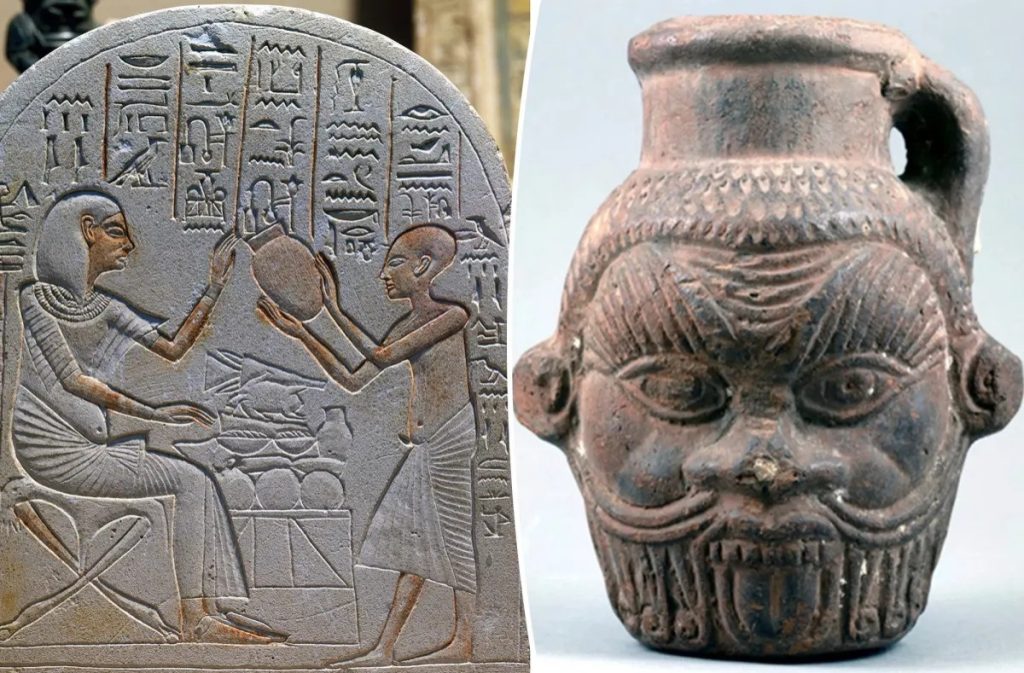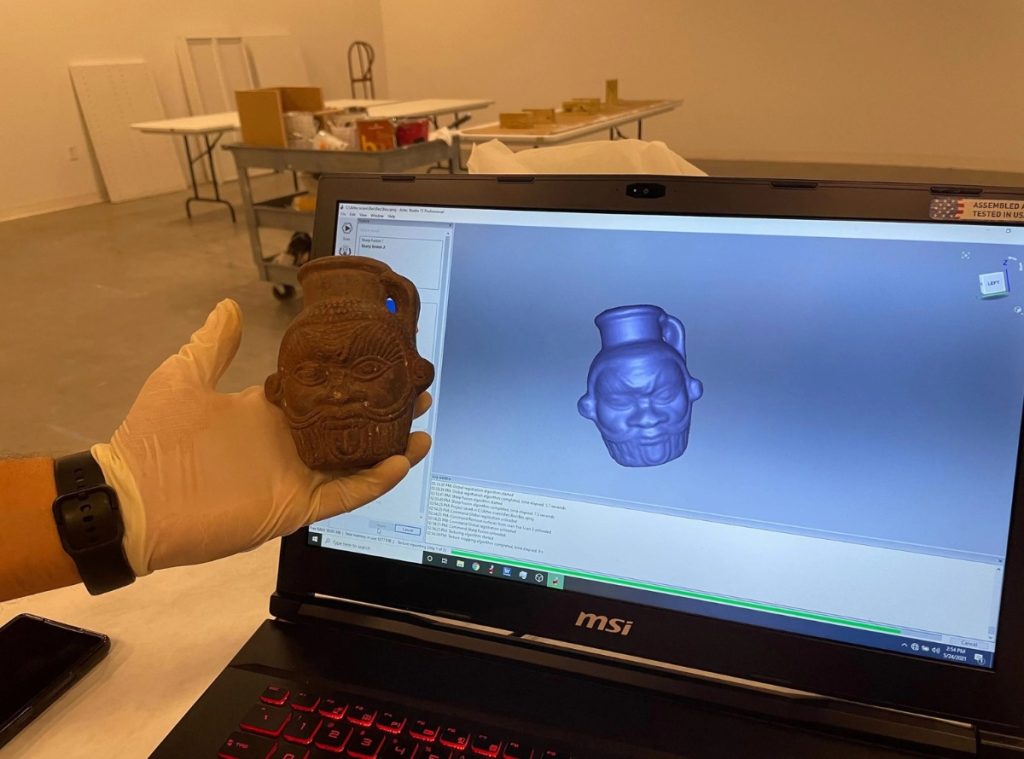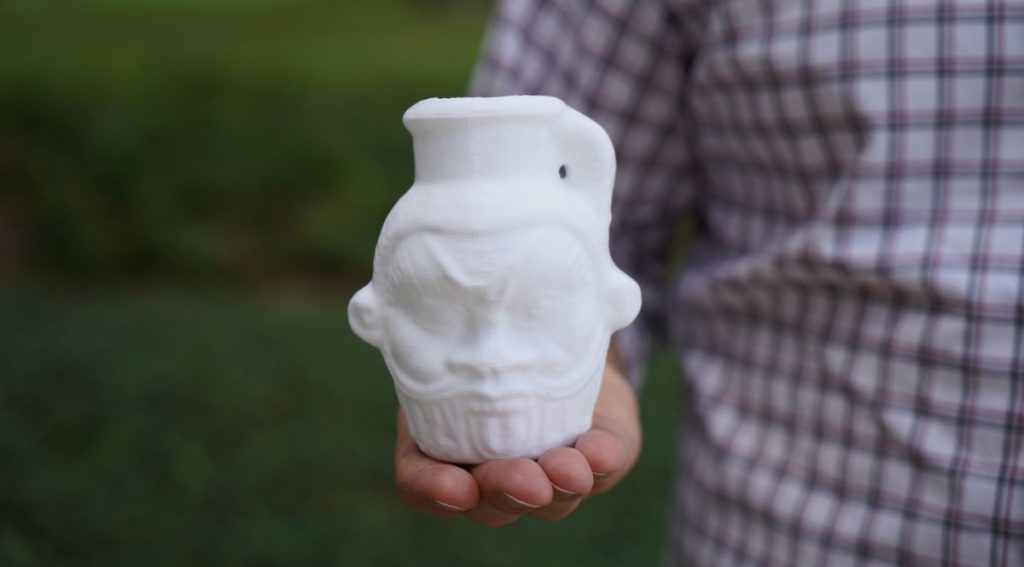Discovery Suggests Egyptians Got High!
The newest discovery by Prof David Tanasi from the University of South Florida provides the first tangible evidence of hallucinogens within an Egyptian Bes mug. This provides evidence to the historical texts and age-old legends about ancient Egyptian medicine, customs and practices. Some of these rituals were performed in pyramids dedicated to the deity.
The Design Featured on the Egyptian Bes Mug
Tanasi conducted his study on an Egyptian Bes mug that was donated to the Tampa Museum of Art in 1984. It was found in Egypt’s Fayum district. The container’s dimensions are petite; 1.7in (4.5cm) in height, which can only contain 4.2 fluid oz (125 mL)

The mug’s design features Diety Bes’ head. He is a protective figure revered for safeguarding, happiness, fertility, healing, and magical purification. According to Enrico Greco, his role expanded during the Ptolemaic era (approximately 330-30 B.C.) to include “divinatory and mystical”.
Findings of David Tanasi
David Tanasi’s findings, published in Nature’s Scientific Reports, illuminate an ancient Egyptian enigma – the mystery surrounding the functions of Bes mugs 2,000 years ago. The varied historical contexts of Bes mugs made it challenging to conjecture their contents or significance in ancient Egyptian society.

“For the first time, we could identify all the chemical traces of the substances within the Tampa Museum of Art’s Bes mug, including the botanicals utilized by the Egyptians, which all possess psychotropic and medicinal qualities,” David Tanasi remarked. He adds, “Religion remains one of the most captivating and enigmatic elements of ancient societies. With this study, we’ve uncovered scientific evidence that supports the notion that Egyptian myths contain some truth, enriching our understanding of the obscure rituals likely performed in the Bes Chambers at Saqqara, located near the Great Pyramids at Giza.”
David Tanasi’s Research Project
David Tanasi developed this research as part of the Mediterranean Diet Archaeology project supported by the USF Institute for the Advanced Study of Culture and the Environment, collaborating with colleagues and Enrico Greco from the University of Trieste and the University of Milan to conduct chemical and DNA analysis. The team employed multiple analytical methods using a powdered sample taken from the vase’s inner walls of the vase to determine what the mug had previously contained.

The findings confirmed that the vase contained a mixture of psychedelic substances, bodily fluids, flavouring agents, and an alcoholic base (possibly wine or beer) —ingredients David Tanasi believes were a primary part of Egyptian myths’ ritualistic reenactment. It was often associated with fertility, especially during the later period of pregnancy. The blood-like appearance and flavour include honey, sesame seeds, pine nuts, liquorice, and grapes. The bodily fluid confirmed blood, breast milk, and mucus (from nasal, vaginal, or salivary sources).

The psychedelic plants identified include the Egyptian blue water lily (Nymphaea caerulea) and Syrian rue (Peganum harmala), both recognized for their hallucinogenic, healing, intoxicating, and sedative effects, which could change perception and amplify visionary experiences. Traces of the Cleome plant were also found. It can induce labour or, in large quantities, lead to abortion.
Branko van Oppen on the Discovery
Branko van Oppen, the curator of Greek and Roman art at the Tampa Museum of Art exclaimed, “For many years now, Egyptologists have speculated on the potential uses of mugs featuring the head of Bes and the types of liquids they might have held, such as sacred water, milk, wine, or beer, Experts were uncertain whether these mugs served a daily purpose, had religious significance, or were involved in magical practices.”

“This research provides insights into magical practices during the Greco-Roman era in Egypt. Egyptologists surmise that individuals visited the so-called Bes Chambers at Saqqara to confirm successful pregnancies due to the numerous dangers associated with childbirth in antiquity. Hence, this blend of ingredients may have been utilized in a dream-vision-inducing magical ritual during this perilous time for expectant mothers.”
Enrico Greco’s Take on Psychedelics Used for Egyptian Rituals
Enrico Greco; the study’s lead author said the findings had for the first time “directly confirmed the use of psychedelics in ancient Egyptian rituals”. In her statement to Newsweek, she adds, “The identified substances would likely have induced dream-like visions, heightened meditative states, and possibly euphoria. These effects would have been ideal for rituals involving prophecy or spiritual transformation.”
Image Courtesy – Archaeology Magazine
Contributor





